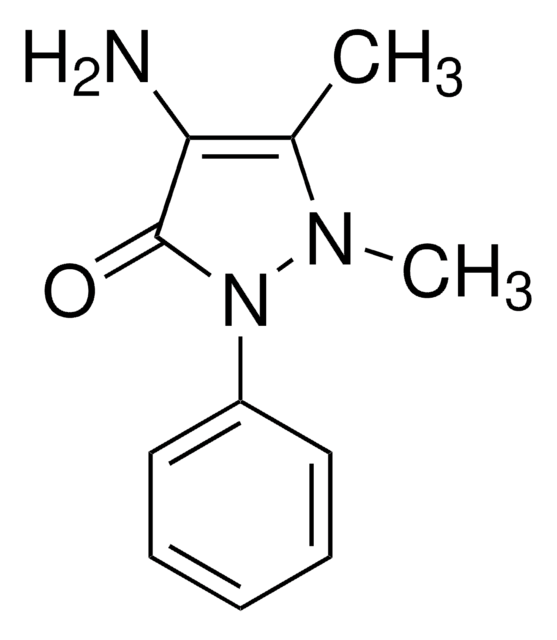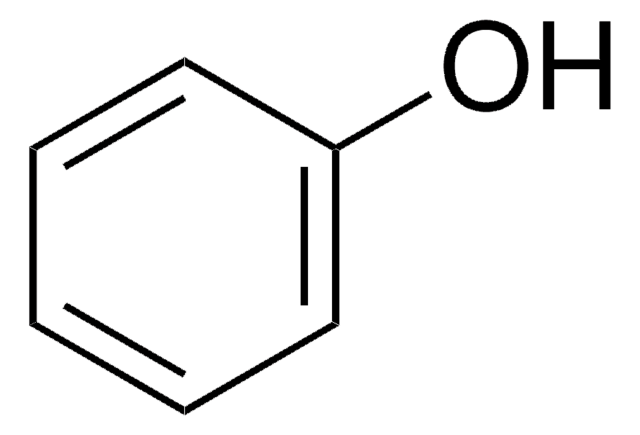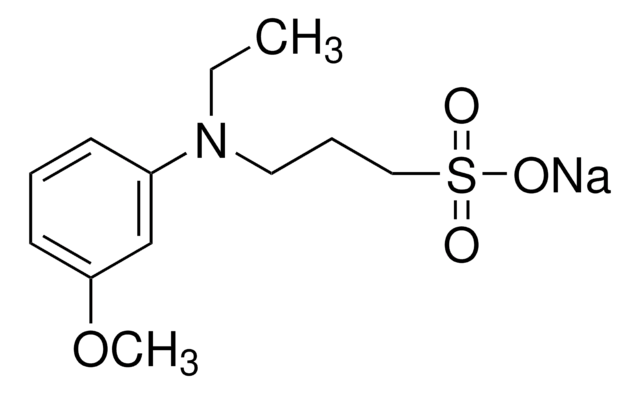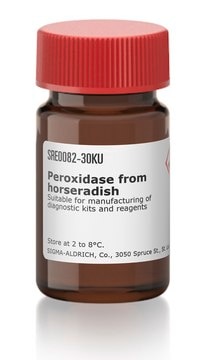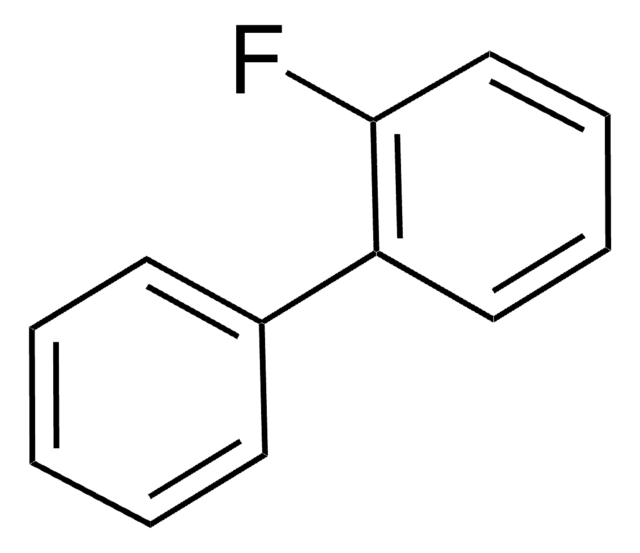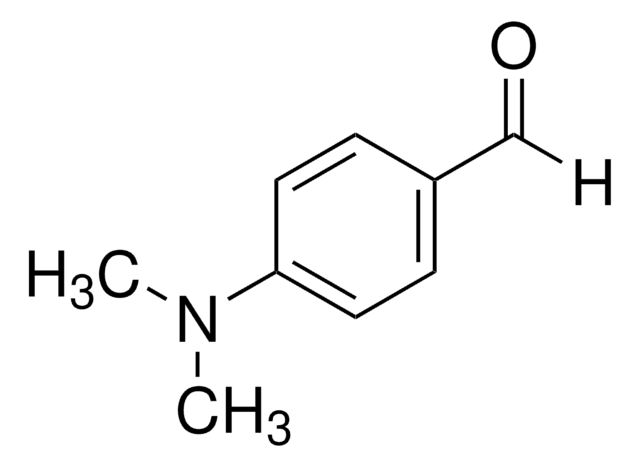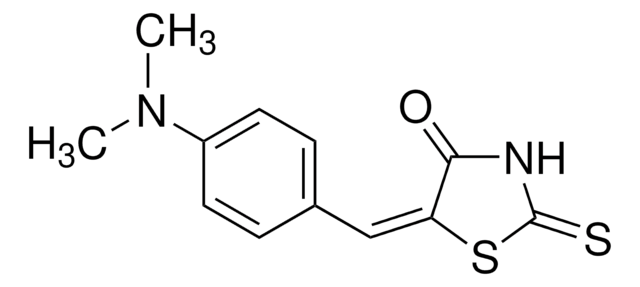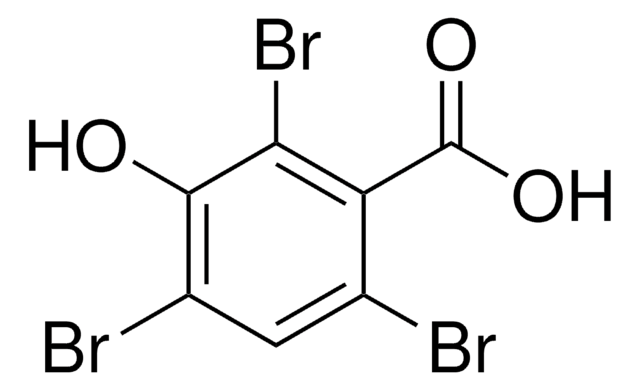06800
4-Aminoantipyrine
for spectrophotometric det. of H2O2 and phenols, ≥98.0%
Synonym(s):
4-Amino-2,3-dimethyl-1-phenyl-3-pyrazolin-5-one, Ampyrone
About This Item
Recommended Products
Quality Level
assay
≥98.0% (NT)
≥98.0%
quality
for spectrophotometric det. of H2O2 and phenols
technique(s)
UV/Vis spectroscopy: suitable
photometry: suitable
mp
105-110 °C (lit.)
108-110 °C
solubility
H2O: 0.1 g/mL, clear to slightly hazy
SMILES string
CN1N(c2ccccc2)C(=O)C(N)=C1C
InChI
1S/C11H13N3O/c1-8-10(12)11(15)14(13(8)2)9-6-4-3-5-7-9/h3-7H,12H2,1-2H3
InChI key
RLFWWDJHLFCNIJ-UHFFFAOYSA-N
Looking for similar products? Visit Product Comparison Guide
Application
- Cu-chelated polydopamine nanozymes with laccase-like activity for photothermal catalytic degradation of dyes.: This research highlights the synthesis of copper-chelated polydopamine nanozymes demonstrating laccase-like activities. These nanozymes enhance the photothermal degradation of dyes, providing a novel approach for environmental remediation (Wang et al., 2024).
- Tramadol and M1 Bioavailability Induced by Metamizole Co-Administration in Donkeys (Equus asinus).: This study explores the pharmacokinetic interactions between tramadol and metamizole in donkeys, offering insights into veterinary medicine and drug administration practices (Araújo-Silva et al., 2024).
- Pharmacokinetics-Based Pediatric Dose Evaluation and Optimization Using Saliva - A Case Study.: This paper presents a methodological innovation using saliva samples to optimize pediatric dosing of medications, which could revolutionize therapeutic drug monitoring in children (Anliker-Ort et al., 2024).
- Spectrophotometric determination of phenol impurity in phenoxyethanol and phenol index of drinking water and municipal wastewater effluent after salting-out assisted liquid phase microextraction (SA-LPME).: This study offers a spectrophotometric method for detecting phenol impurities, enhancing water quality monitoring techniques (Roustaei et al., 2024).
- A novel hybrid sensor array based on the polyphenol oxidase and its nanozymes combined with the machine learning based dual output model to identify tea polyphenols and Chinese teas.: This research introduces a hybrid sensor array employing polyphenol oxidase and its nanozymes for detecting tea polyphenols, showcasing the integration of enzymatic methods with machine learning for enhanced specificity and sensitivity in food analysis (Yang et al., 2024).
Other Notes
related product
signalword
Warning
hcodes
Hazard Classifications
Acute Tox. 4 Oral
Storage Class
11 - Combustible Solids
wgk_germany
WGK 3
flash_point_f
Not applicable
flash_point_c
Not applicable
ppe
dust mask type N95 (US), Eyeshields, Gloves
Choose from one of the most recent versions:
Certificates of Analysis (COA)
Sorry, we don't have COAs for this product available online at this time.
If you need assistance, please contact Customer Support.
Already Own This Product?
Find documentation for the products that you have recently purchased in the Document Library.
Customers Also Viewed
Our team of scientists has experience in all areas of research including Life Science, Material Science, Chemical Synthesis, Chromatography, Analytical and many others.
Contact Technical Service